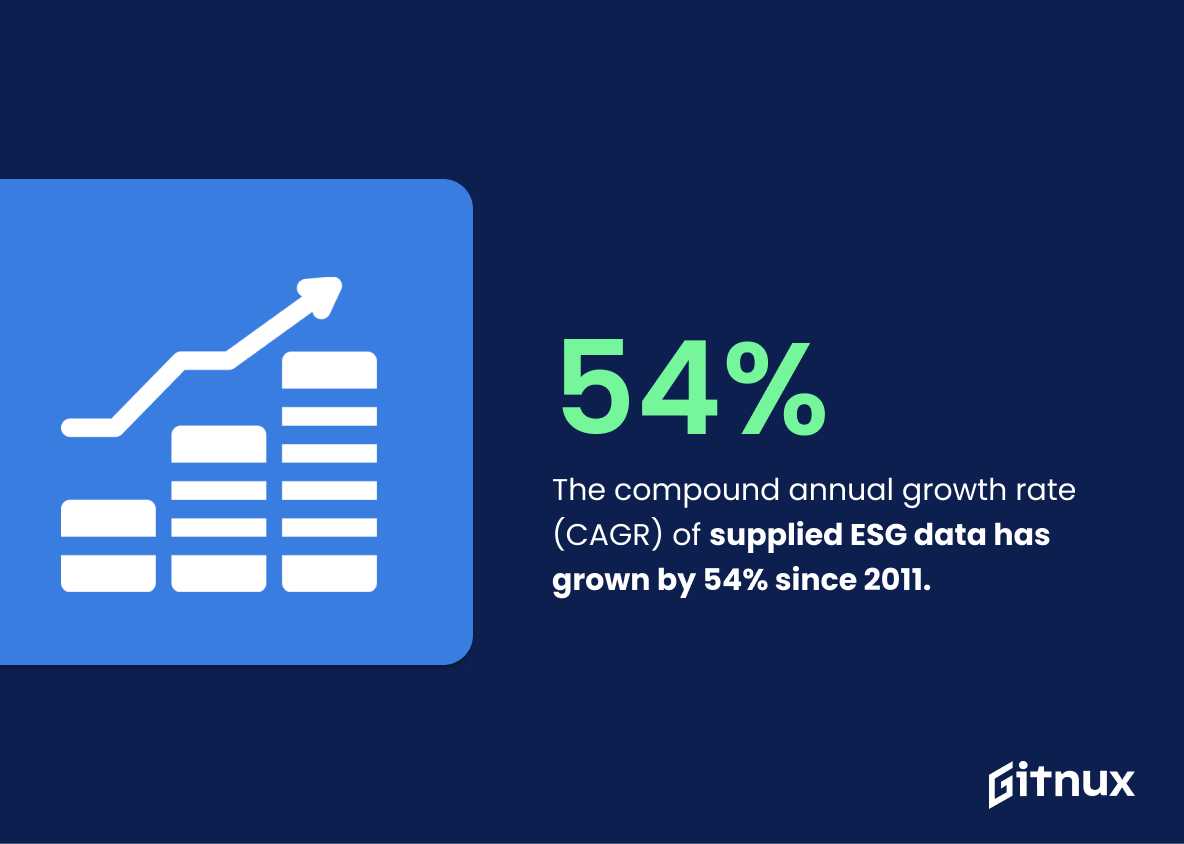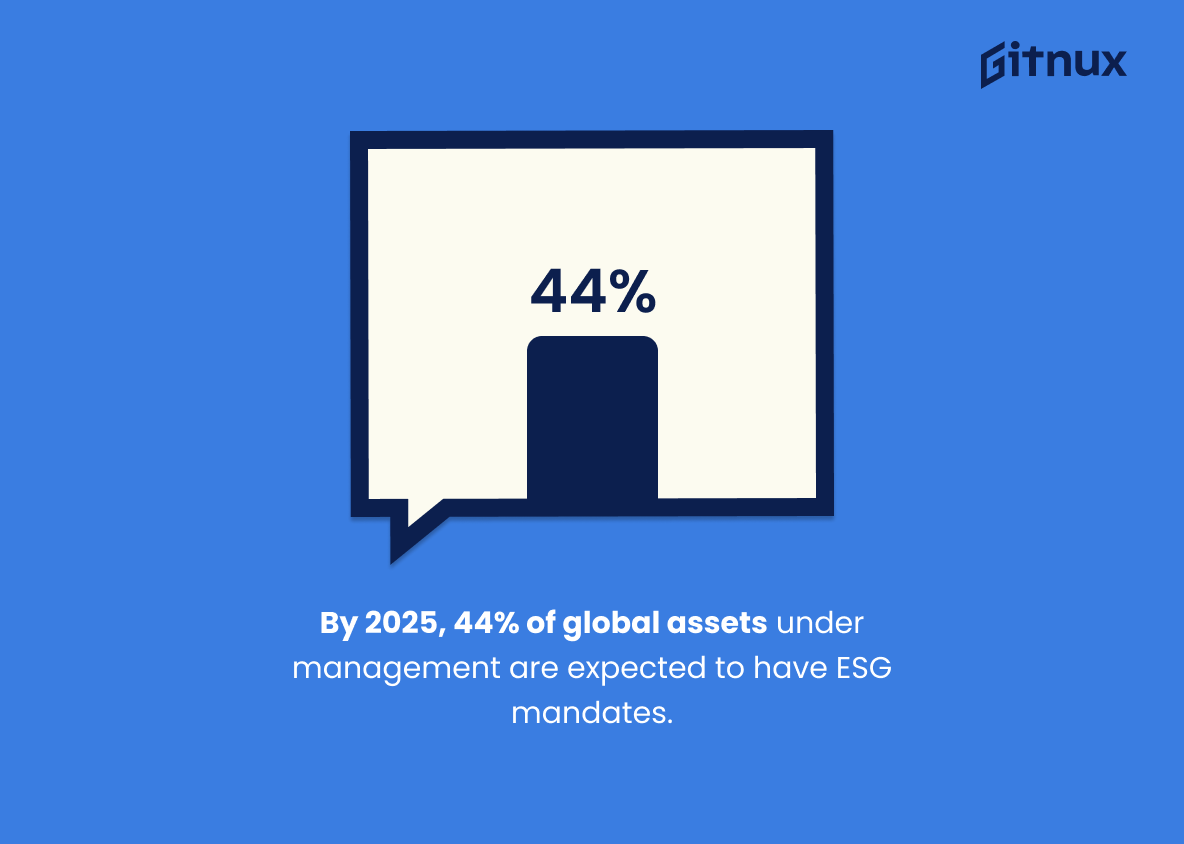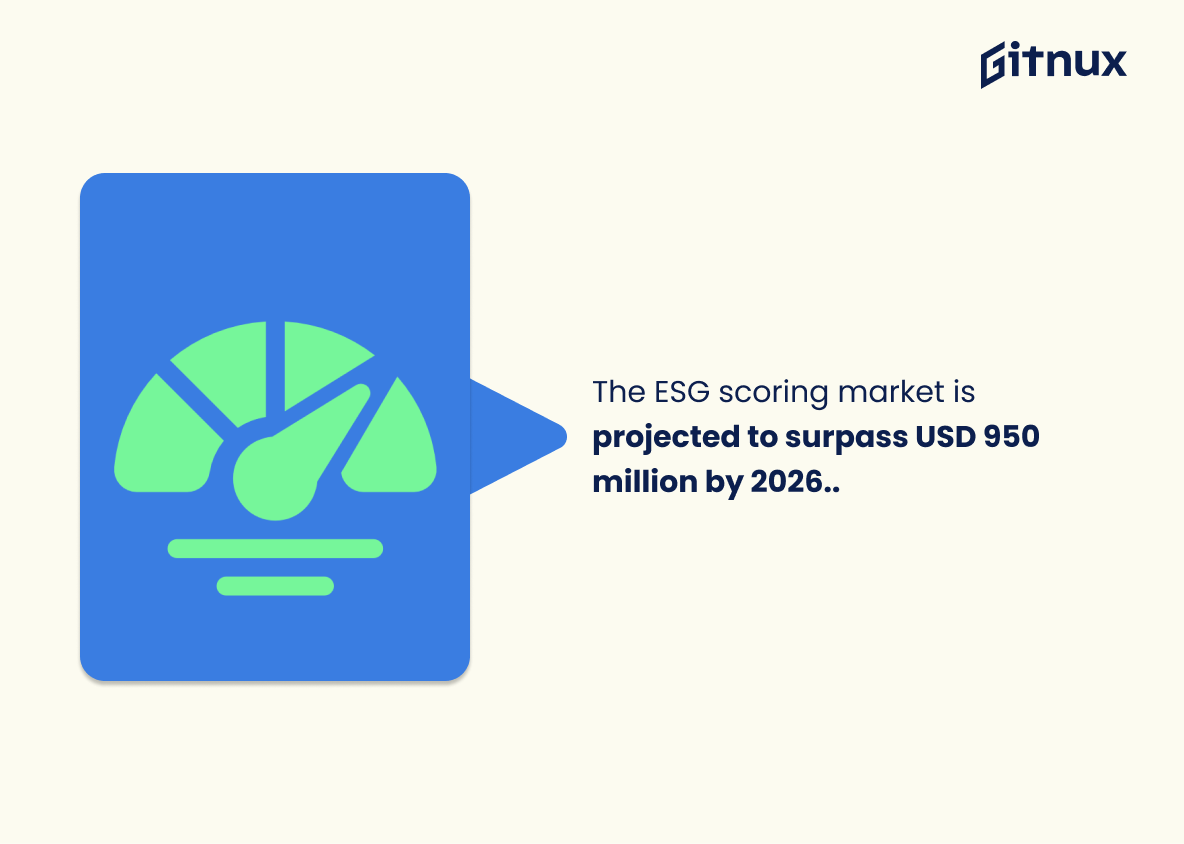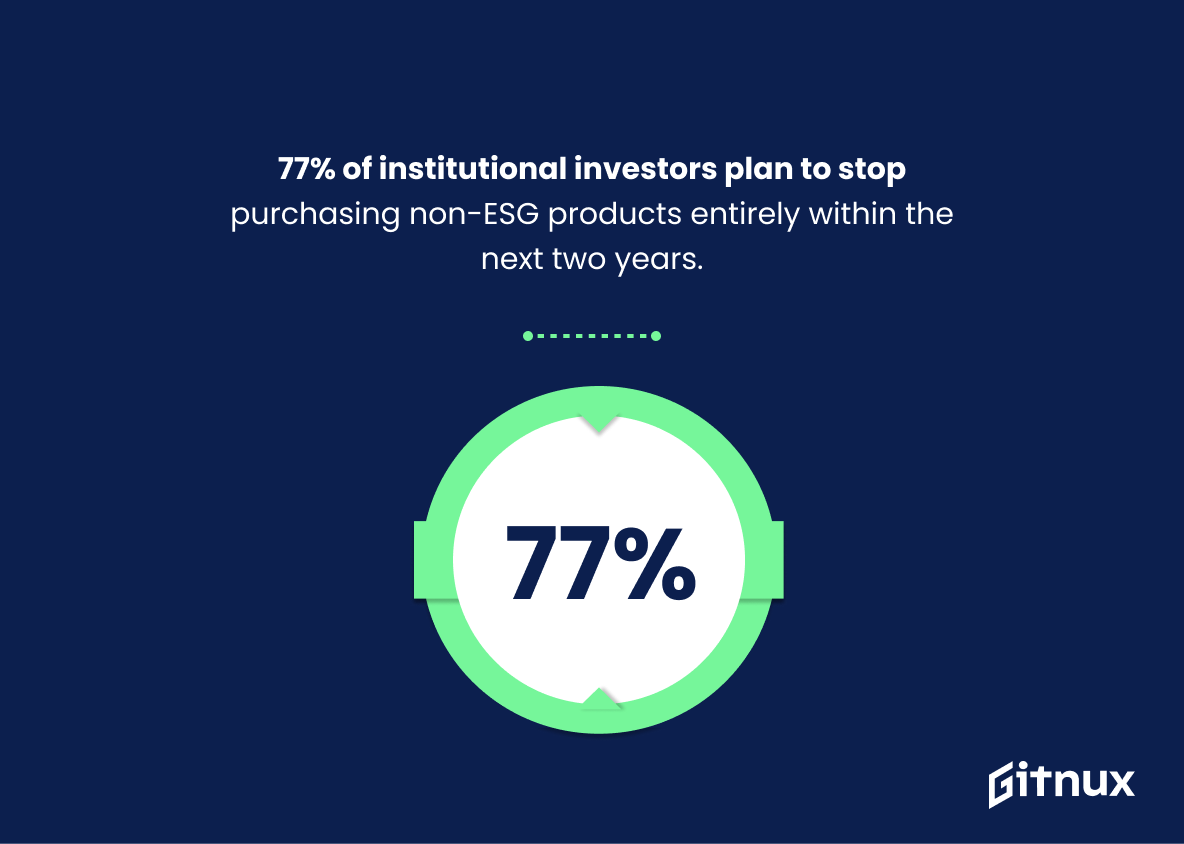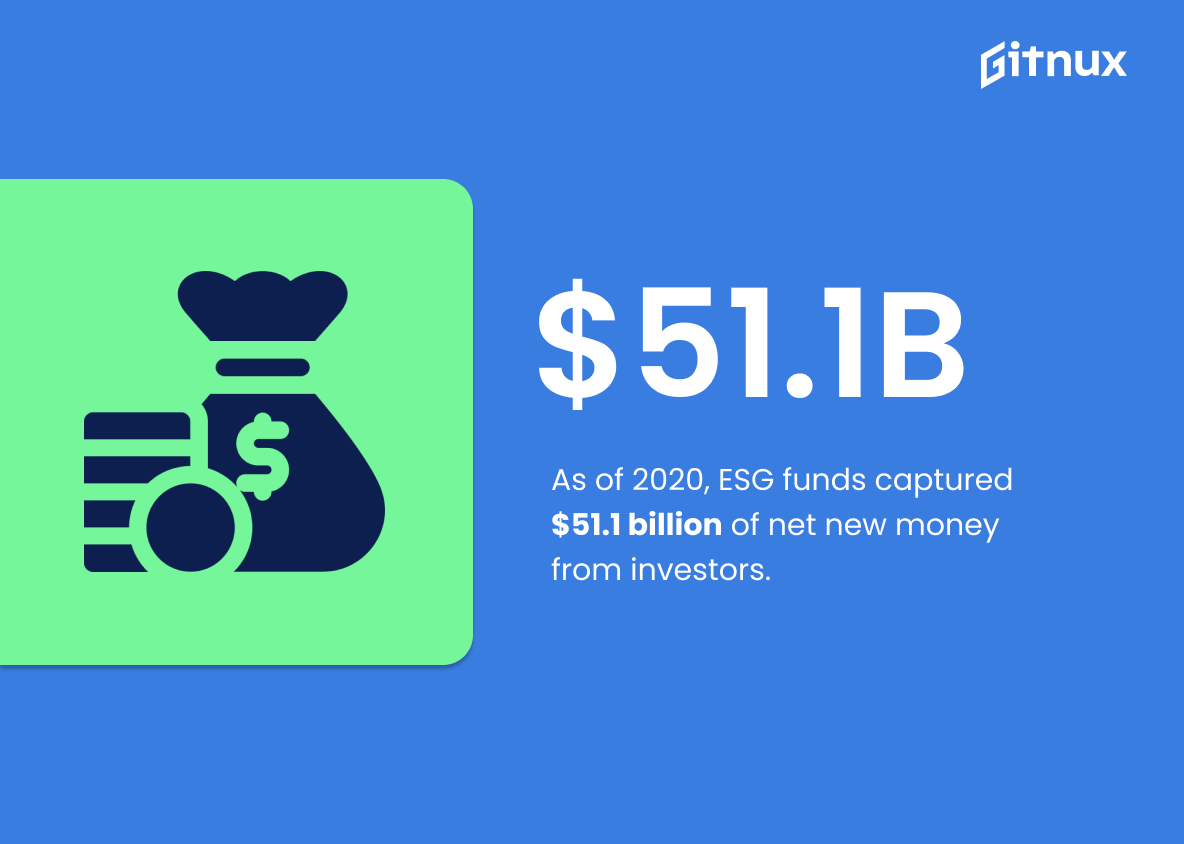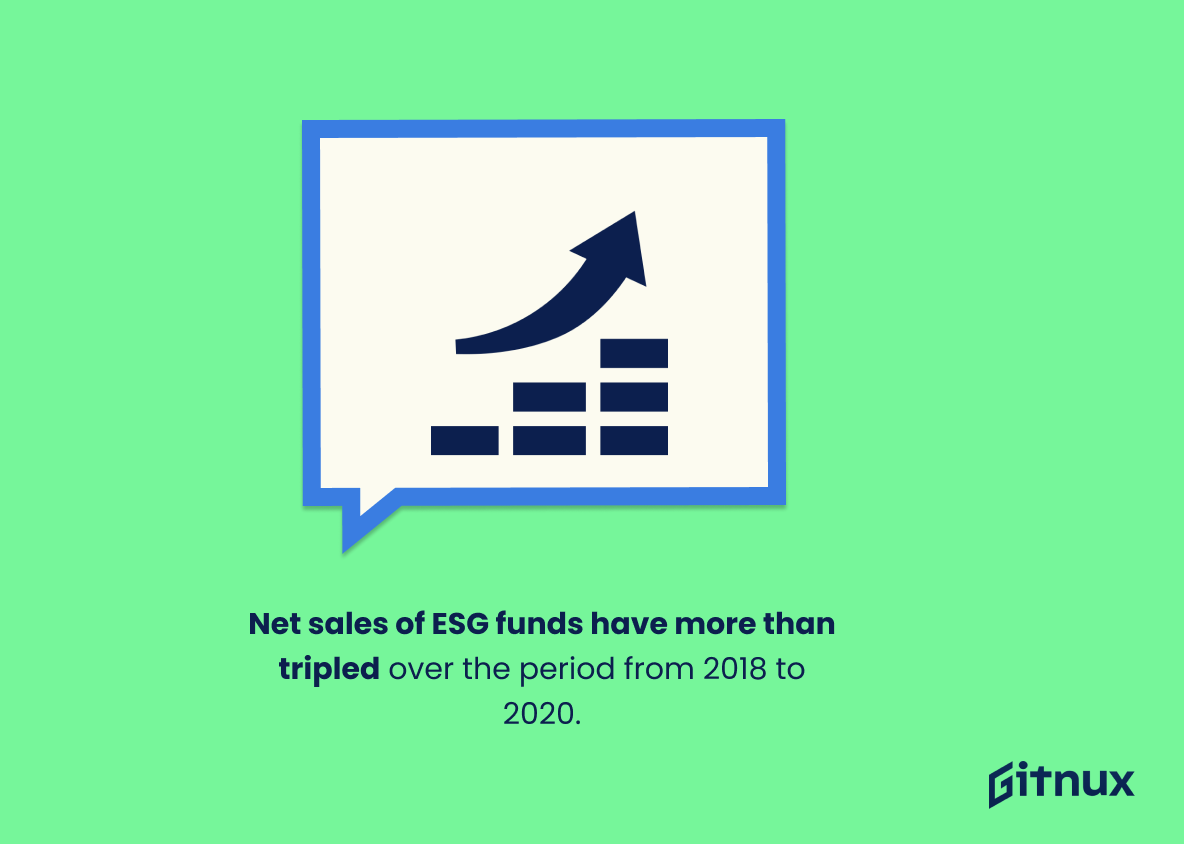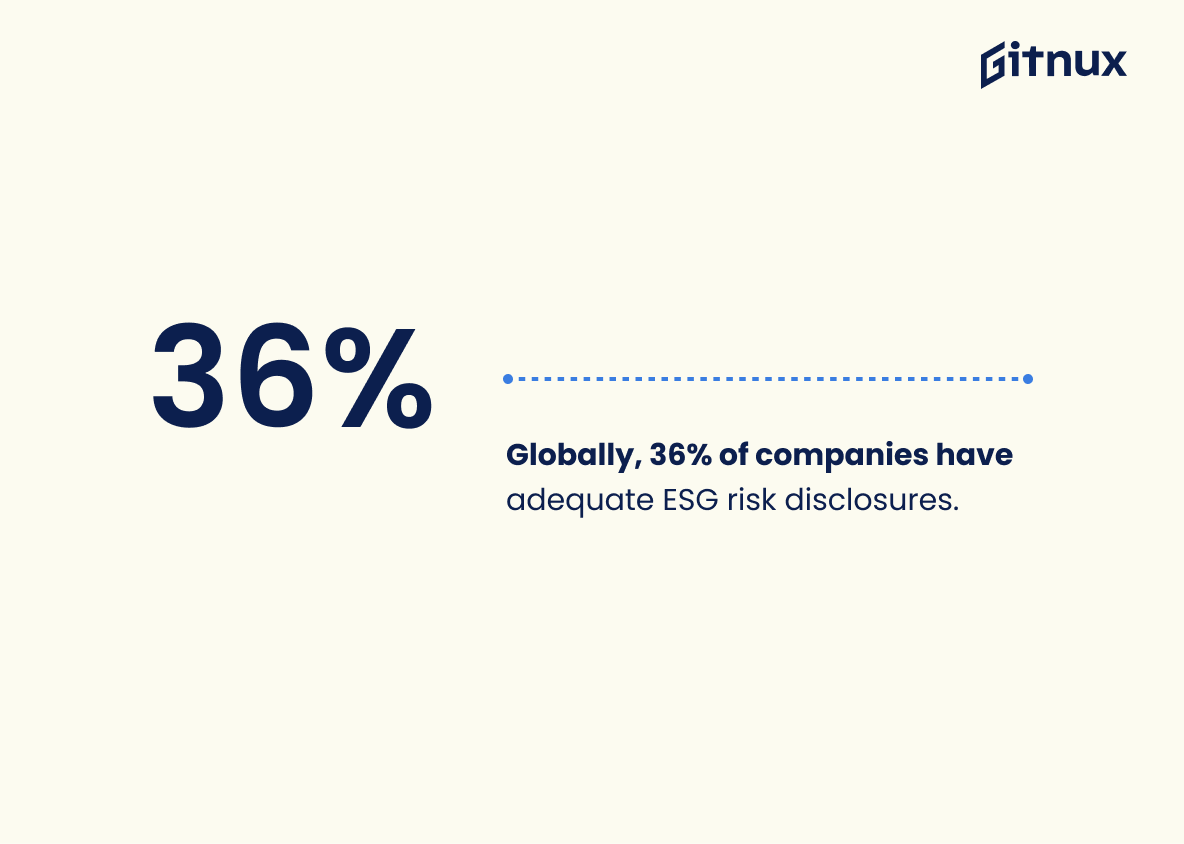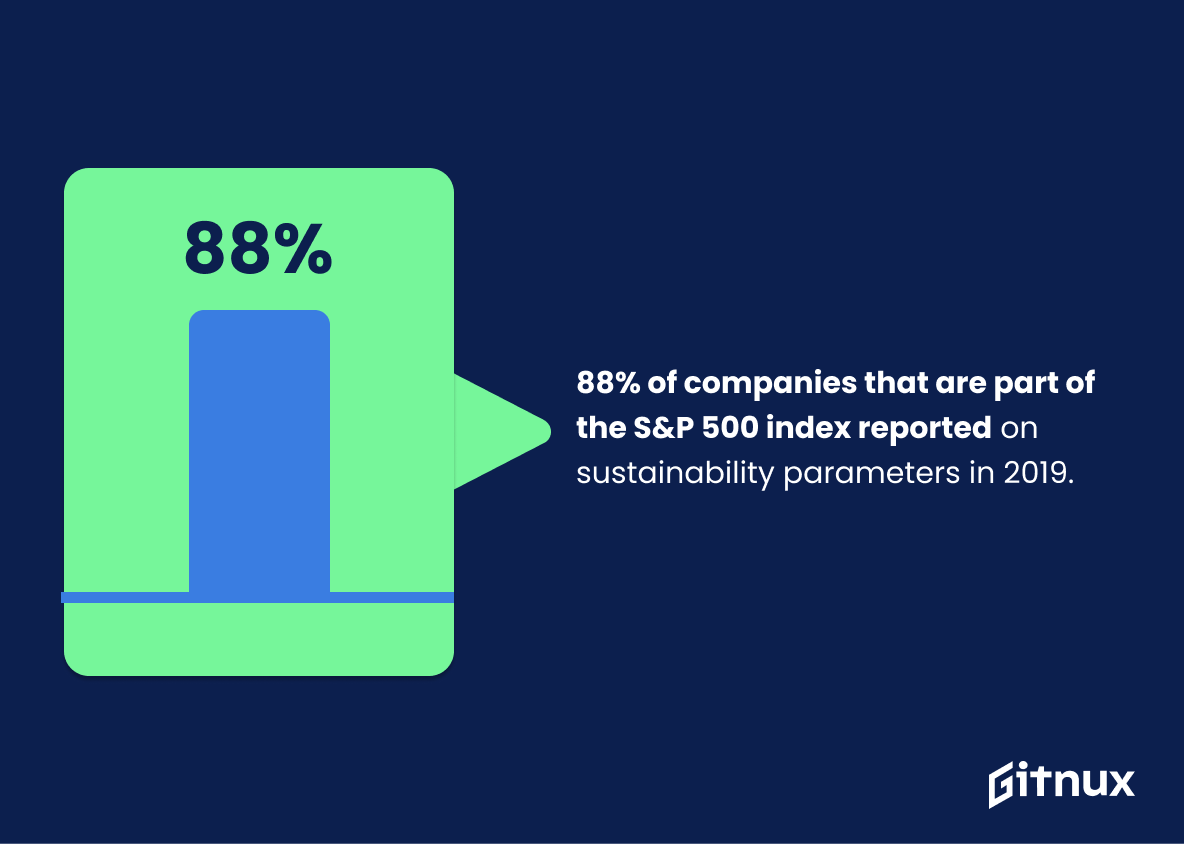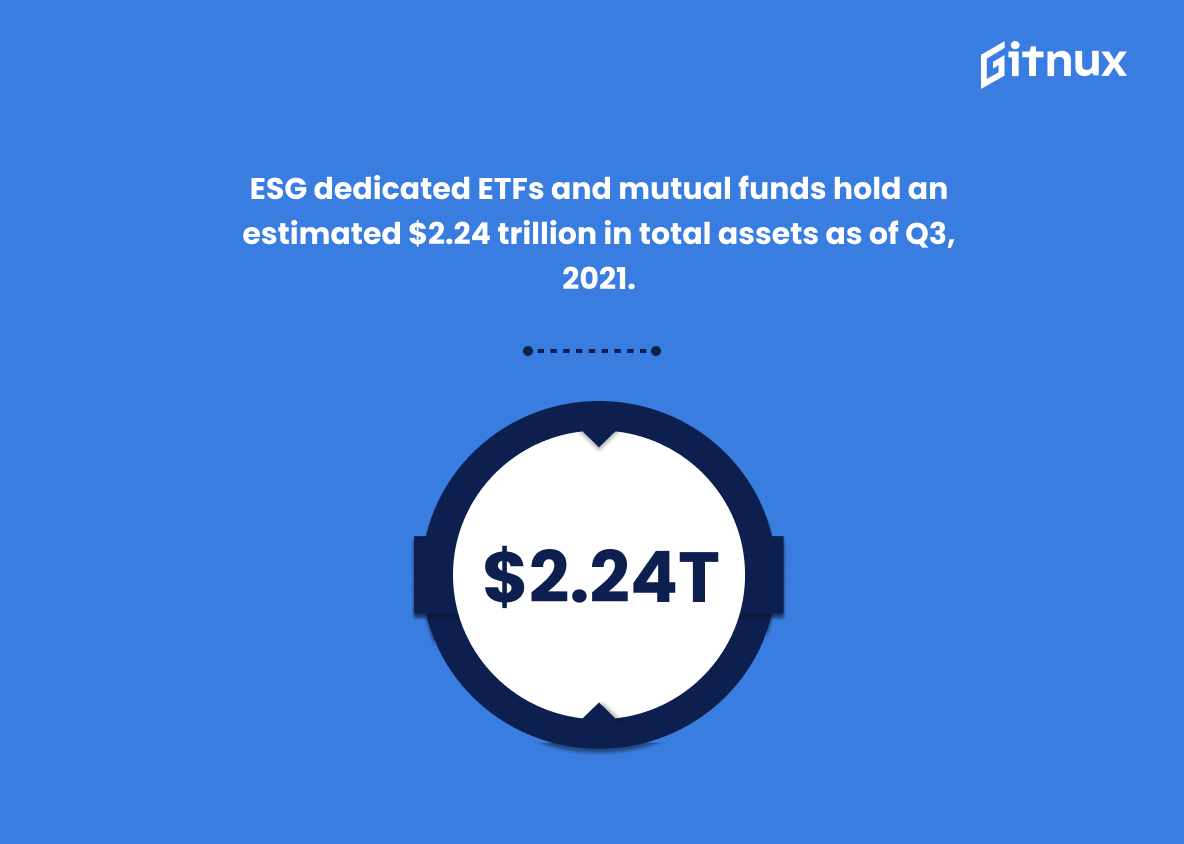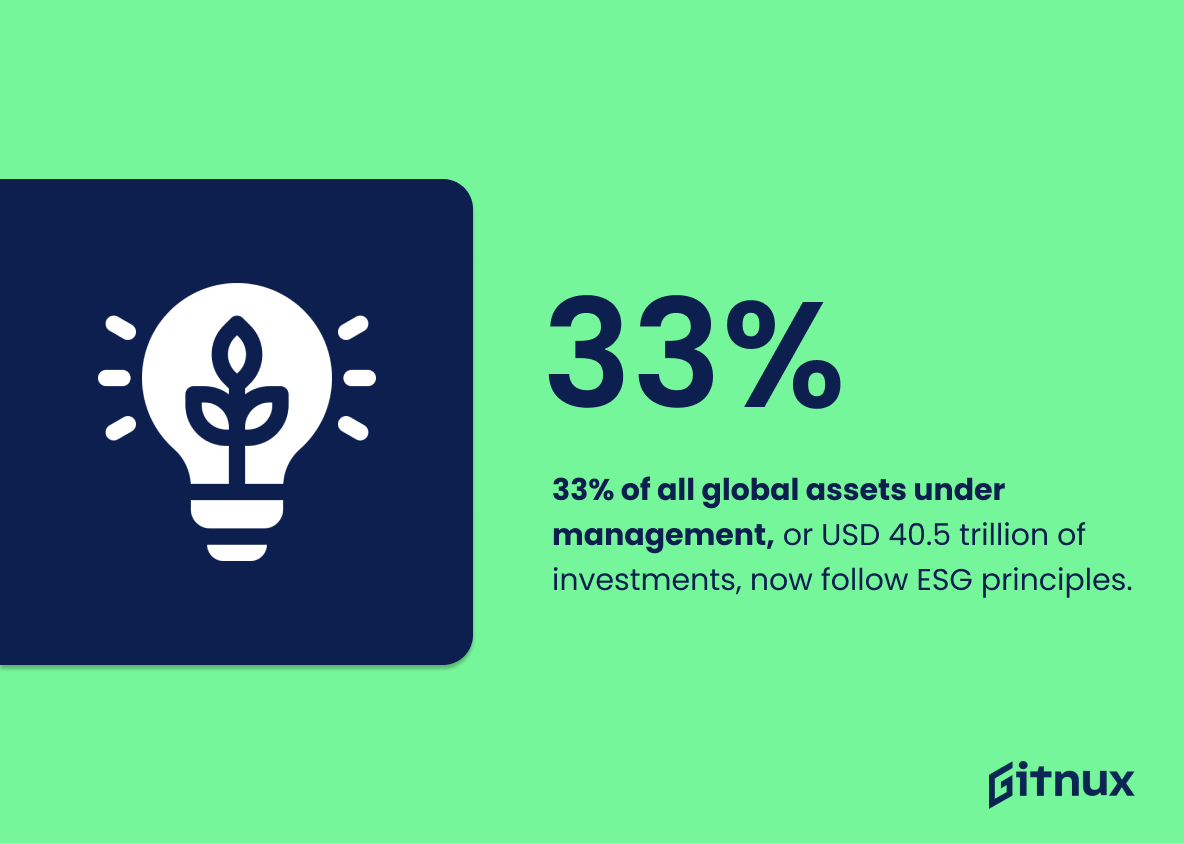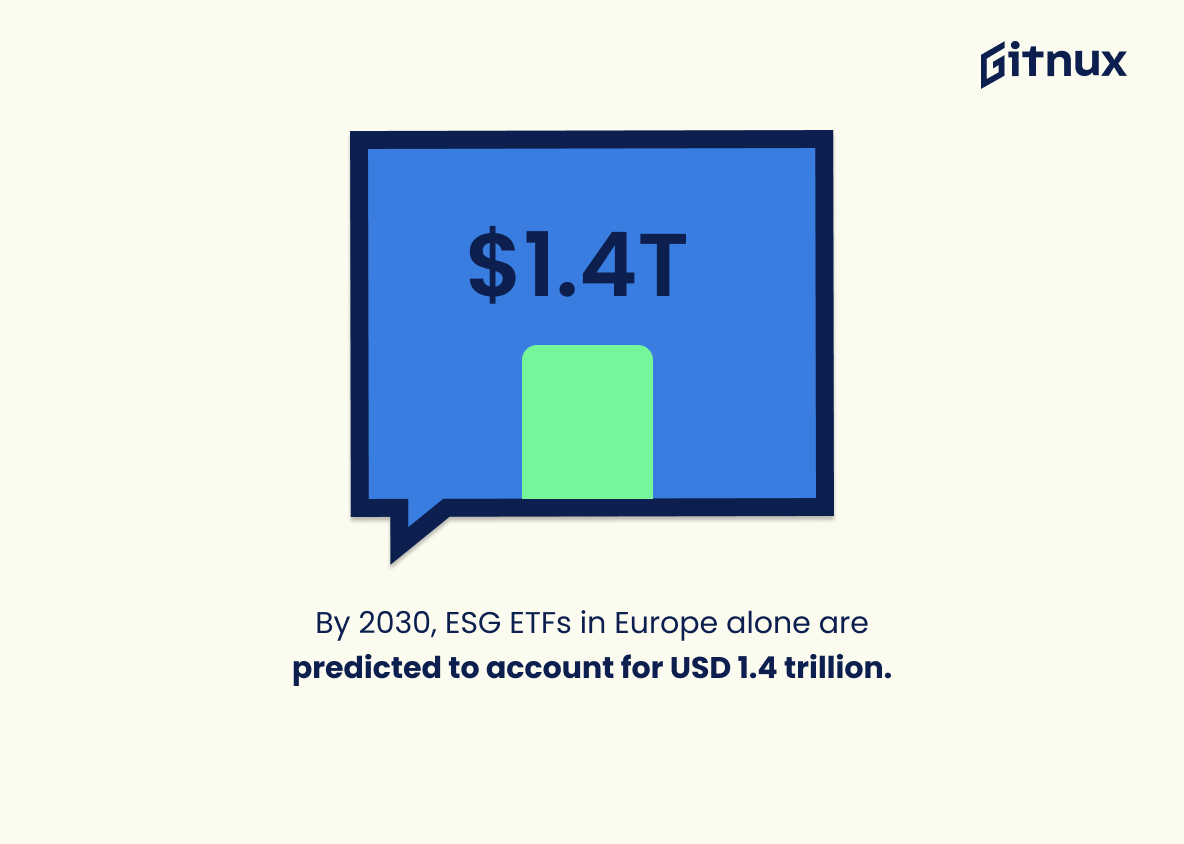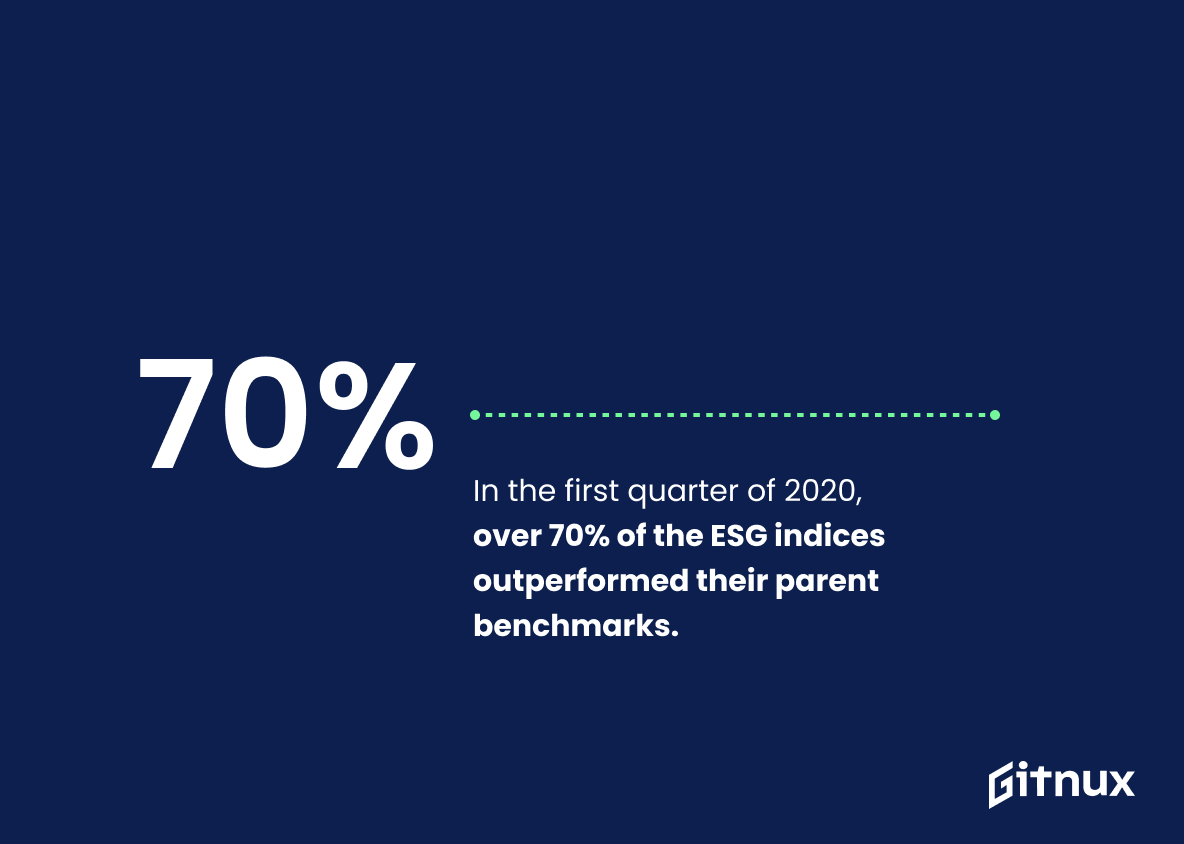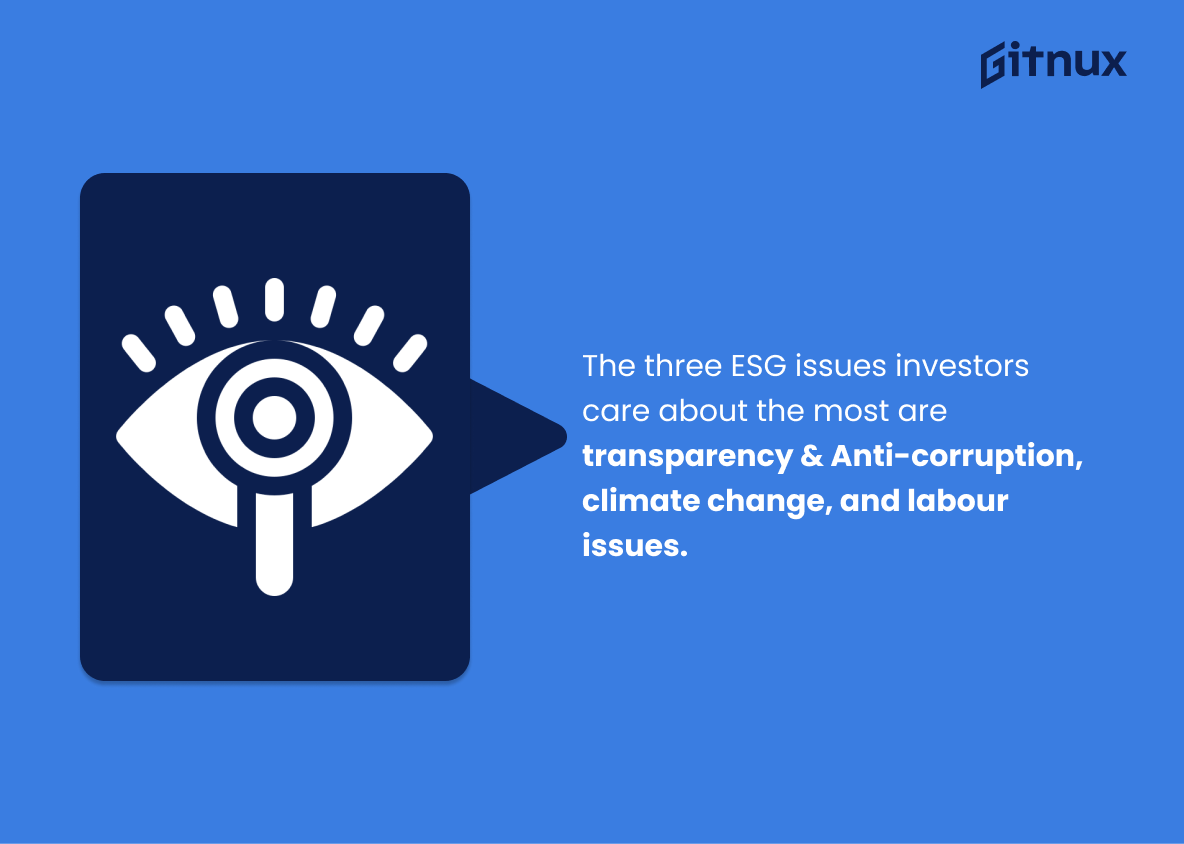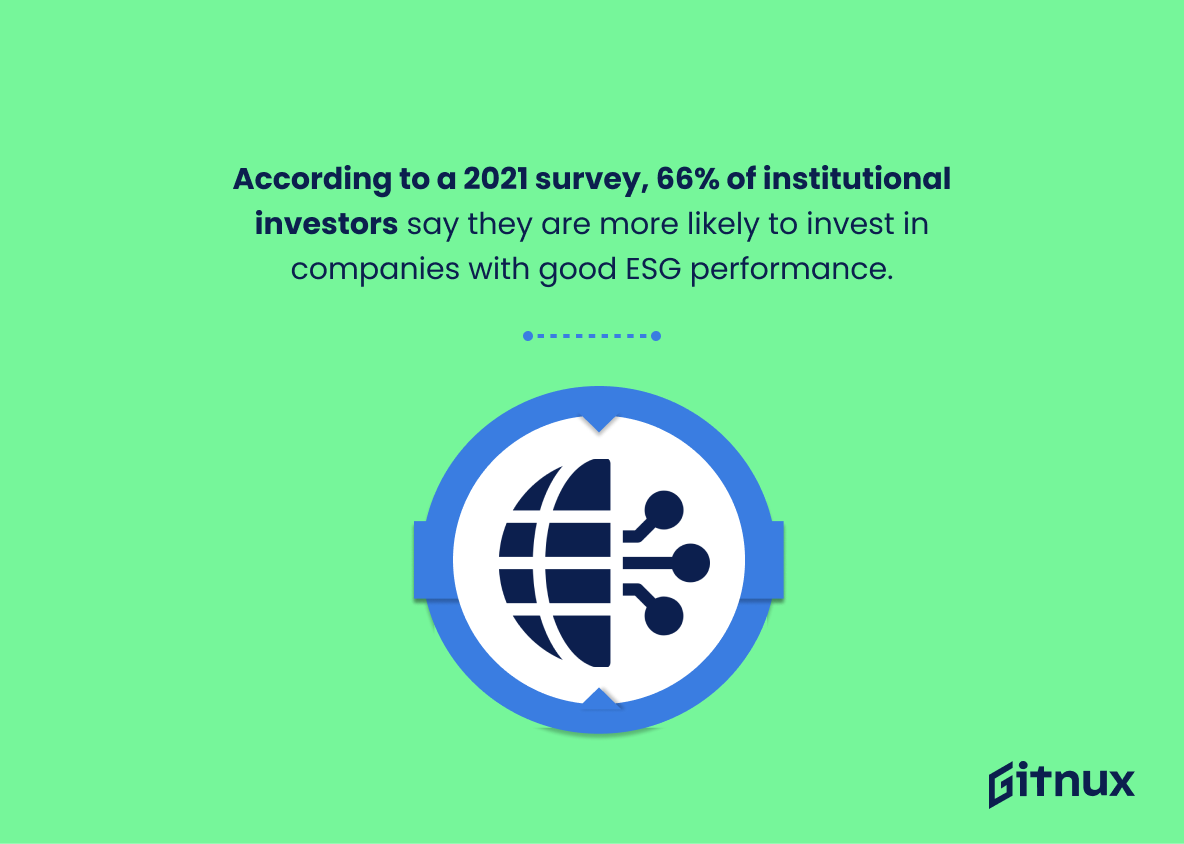In today’s ever-evolving economic landscape, the Environmental, Social, and Governance (ESG) industry stands out as a beacon, guiding businesses towards sustainable and socially responsible practices. Whether you are an ardent environmental activist or a forward-thinking business leader, understanding the latest ESG industry statistics is vital. They provide insights into the growing importance of conscientious investment decisions and corporate governance, painting a vivid picture of an economy that’s shifting towards sustainable models.
In this blog post, we’ll delve deep into the most recent statistics, giving you a comprehensive glimpse of the current state and future trajectory of the ESG industry. Buckle up for a data-driven expedition into the world of responsible investing and sustainable business practices.
The Latest ESG Industry Statistics Unveiled
The compound annual growth rate (CAGR) of supplied ESG data has grown by 54% since 2011.
Reflecting upon the staggering 54% leap in the Compound Annual Growth Rate (CAGR) of supplied ESG data since 2011 paints an elaborate picture of the seismic shift permeating the ESG industry landscape. This impressive upsurge accentuates the heightened attention ESG factors are receiving from stakeholders, weaving a narrative of the burgeoning pace at which the ESG domain is changing.
Coupled with the growing trend of widening ESG disclosure, this statistic underscores the strategic push towards positive environmental, social, and governance practices. It also echoes the intensifying demand for ESG data among investors, emphasizing the lucid correlation between sustainable operations and long-term investment resilience. Therefore, this striking figure subtlety signals the transformative era of ESG-centric investments we find ourselves thrust into today.
By 2025, 44% of global assets under management are expected to have ESG mandates.
In the expansive universe of investing, a star is rapidly rising and is projected to hold a significant portion of global assets; no less than 44%, under its sway by 2025. This star, governed by ESG mandates, is compelling enough to catch the eye of any prudent investor navigating the financial cosmos. The projected dominance of ESG shines a light on the pulse of our modern investment landscape, mirroring a growing consciousness towards environmental, social, and corporate governance factors.
Not only does it indicate the velocity of this trend, it also echoes the evolving ethos of investors who are redefining value beyond purely fiscal terms. Essentially, our collective financial future, it appears, is increasingly interwoven with our planet’s sustainability and socially responsible growth. Thus, it is impossible to fully grasp the complexity and dynamism of the ESG industry without acknowledging this profound statistic.
The Global ESG data market’s valuation is projected to reach USD 1 trillion by 2021.
A projected valuation of USD 1 trillion for the Global ESG data market by 2021 illuminates the sheer magnanimity and rapid growth potential of the ESG industry. It underscores an intriguing narrative of investors and businesses rapidly weaving ESG metrics into their strategic fabric, perhaps driven by the accruing realization of its social, economic, and corporate governance implications.
It sets the tempo for the coming decade of ESG’s influence on investment decision-making, corporate performance assessment, and the formation of sustainable business models. This projection serves as a bold estimation, defining the magnitude, trajectory, and pivotal role of ESG data in shaping our economic future.
The ESG scoring market is projected to surpass USD 950 million by 2026.
Examining the exponential growth trajectory of the ESG scoring market, we’re peering into a near future wherein it’s poised to leap over the USD 950 million mark by 2026. This quantum leap from today isn’t simply a matter of counting numbers, but it underscores the increasing prominence and awareness of environmental, social, and governance factors in the global investment arena.
Positioned at the heart of a blog post on ESG Industry Statistics, this forecast serves as a bellwether, epitomizing an era where sustainable and ethical practices are no longer viewed as mere niceties, but rather necessities critical to a firm’s long-term financial success.
77% of institutional investors plan to stop purchasing non-ESG products entirely within the next two years.
In a sphere of ever-increasing awareness and responsibility, this statistic serves as the compass guiding the financial world towards the ESG sector. A striking 77% of institutional investors pledge their commitment to extinguish non-ESG product purchases entirely over the next two years, thereby igniting the ESG industry’s growth trajectory and solidifying its importance.
This number underscores the rising trend towards environmental, social, and corporate governance concerns, earmarking them as the lodestar for future investments. Highlighted within a blog post on ESG industry statistics, it lays out the landscape’s fiercely competitive future, where non-ESG products might ultimately become relics of the past. Consequently, for those desiring to stay ahead of the curve, decoding and maneuvering the ESG statistics labyrinth becomes an inescapable reality.
As of 2020, ESG funds captured $51.1 billion of net new money from investors.
Delving into the world of ESG industry statistics, one cannot overlook the colossal figure of $51.1 billion. This clout underscores the swift and dominant surge of ESG funds in attracting net new money from investors in 2020. This monetary magnetism not only narrates a story of skyrocketing investor trust but also shines light on a dramatic pivot in investment trends. Drawing this staggering figure on the canvas of ESG’s future prospects breathes life into the tantalizing possibility of ESG funds becoming the new norm and starring in mainstream investment portfolios.
Net sales of ESG funds have more than tripled over the period from 2018 to 2020.
Unfolding the potential and magnitude of the ESG industry’s expansion, the statistic vividly portrays – ‘Net sales of ESG funds have more than tripled over the period from 2018 to 2020’. Briefly put, it’s a testament to the blooming interest of investors in sustainable and responsible investing, thus causing a phenomenal growth within a short time-frame.
The powerful surge seen in the net sales of ESG funds serves as a crystal clear indicator of the industry’s readiness to step out of the shadow of its traditional counterparts. This seismic shift reveals the potent transformation of the investment landscape towards ethical investment avenues. In a nutshell, this statistic is an emblem of the accelerating velocity of ESG’s impact on the global finance stage.
Globally, 36% of companies have adequate ESG risk disclosures.
Painting a vivid picture of the current landscape in the ESG (Environmental, Social, and Governance) industry, this particular statistic unveils that a mere 36% of companies worldwide maintain suitable ESG risk disclosures. When navigating through uncharted territories of ESG industry statistics, this detail acts as a pivotal compass guiding us towards an understanding of how far the realm of conscious capitalism has progressed.
Just imagine, in a world that increasingly values sustainable and ethical business practices, less than half of companies are providing a transparent look into their ESG risks. This could point towards a gap between societal expectations and corporate behaviors, which may be a rich area for analysis for investors, stakeholders, and policy makers.
Furthermore, if we flip the lens, this statistic subtly hints that a remarkable 64% companies around the globe are potentially holding their cards too close to their chests on the ESG front. This crystallizes the immense room for growth in the ESG industry, and showcases an urgent need for enhanced disclosure and a more comprehensive, transparent assessment of ESG-related risks. Thus, this single number touches down at the intersection of current industry practice and future improvement potential, serving as a lighthouse enlightening the path ahead for ESG-focused discourse, strategies, and policies.
88% of companies that are part of the S&P 500 index reported on sustainability parameters in 2019.
The striking revelation that a mammoth 88% of organizations within the S&P 500 index reported on sustainability parameters in 2019 paints an impressive portrait of the ESG industry’s escalation. This surge is not merely a fad or an empty gesture towards ‘being green.’ It’s an indicator of a business world awakening to realize the necessity of ecological protection. Businesses are aligning their goals with broader societal and environmental values and this bold statistic confirms such an alignment.
As we delve into ESG industry statistics, this interesting analytics encourages readers to recognize the continuing shift towards businesses incorporating sustainable strategies into their operations. It’s not just about the statistics; it’s about progress, responsibility, and sustainability for a better future.
ESG dedicated ETFs and mutual funds hold an estimated $2.24 trillion in total assets as of Q3, 2021.
Unveiling a shift in investment tendencies, this impressive figure of $2.24 trillion provides a clear indicator of the escalating momentum in the realm of sustainable investing, specifically as it relates to Environmental, Social, and Governance (ESG) related ETFs and mutual funds. When analyzing the ESG industry statistics, the sheer volume of assets managed in these specific investment products showcases not only the burgeoning interest, but also the concrete commitment of both institutional and individual investors toward socially responsible and sustainable choices.
This data affords a quantified perspective of the industry’s continual growth and the escalating trajectory of ESG investing, providing significant insights for those engaged in all aspects of the industry, from policy-making and fund management to research and advocacy.
33% of all global assets under management, or USD 40.5 trillion of investments, now follow ESG principles.
Reflecting on the statistics denoting a monumental $40.5 trillion, equivalent to 33% of global assets under management, adhering to ESG principles sparks a key conversation point for our blog post on ESG industry statistics. This figure eloquently affirms the prominent shift towards ethical and sustainable investing that is currently sweeping the global investment landscape.
Evidenced by the sheer volume of funds committed, such a trend underscores the escalating priority investors are assigning to organizations that champion environmentally friendly, socially responsible and exemplary corporate governance. It’s akin to a spotlight, illuminating the increasing economic clout the ESG sector now holds; that’s more than just a niche, it’s a force majeure transforming modern investing patterns. Consequently, those numbers aren’t a mere financial footnote but a formidable shaper of the future we are financially investing in.
By 2030, ESG ETFs in Europe alone are predicted to account for USD 1.4 trillion.
Forecasting an impressive surge to USD 1.4 trillion in European ESG ETFs by 2030 illuminates the accelerating pace at which these sustainable investing strategies are transitioning from niche to mainstream in the investment world. Within the tapestry of ESG industry statistics, this projected figure underscores a potent combination of growing commitment to social responsibility among investors and the potential for attractive returns.
This prediction provides both a beacon and a barometer, indicating the direction in which the industry is moving and the quantifiable scale of that movement. Without a doubt, the incorporation of this statistic in your ESG blog post would powerfully punctuate the narrative of an industry poised for profound growth.
In the first quarter of 2020, over 70% of the ESG indices outperformed their parent benchmarks.
The ability of over 70% of ESG indices to outperform their parent benchmarks in the first quarter of 2020 provides significant insight into the ESG industry’s potential for high yield. This powerful data point attests to the noteworthy financial performance of the ESG investments, debunking any preconceived notions that socially responsible investments sacrifice return for sustainability.
So, if you are searching for a potent combination of profitability and environmental consciousness, the robust performance of ESG indices is an encouraging beacon in the investment landscape, solidifying their position at the forefront of ground-breaking profitability and ethical investment strategies.
The three ESG issues investors care about the most are transparency (ie. Anti-corruption measures), climate change, and labour issues.
The heart of ESG investing beats with a commitment to transparency, climate change, and labor issues – the triad of investor preferences captured insightfully by this statistic. This number speaks volumes in a blog post about ESG Industry Statistics, illustrating where the investor priorities lie and painting a clear picture of what rings the loudest in their ESG consciousness.
It casts a spotlight on the level of credibility businesses must maintain, their responsibility towards the environment, and the importance of human rights in their operations. The statistic essentially maps the contours of the ESG landscape, serving as a compass for companies vying for investor attention in this field, and offering readers a fresh perspective on understanding investor behavior and crafting effective ESG strategies.
According to a 2021 survey, 66% of institutional investors say they are more likely to invest in companies with good ESG performance.
In the realm of ESG (Environmental, Social, Governance) Industry Statistics, the spotlight often falls on numbers that illustrate significance or trends. Take for instance, the impressive statistic from a 2021 survey displaying 66% of institutional investors leaning towards companies demonstrating solid ESG performance. This figure works as a prominent beacon of interest, highlighting the importance institutional investors place on ESG factors when deciding where to allocate their funds.
It serves as a compelling testament to the growing recognition of the ESG industry’s impact and its increasing relevance in investment decision making. Thus, it can be considered as a key indicator of the emerging paradigm shift towards sustainable investing and offers great value for those interested in understanding contemporary trends and future prospects in the ESG industry.
Conclusion
In summary, the exponential growth, as evidenced by the ESG Industry Statistics, reflects the increasing emphasis investors and companies alike are placing on Environmental, Social and Governance factors. We expect to see this trend continue to accelerate, as awareness of sustainability issues becomes more prevalent and necessary.
It is no longer a niche area of interest, but a mainstream consideration driving strategic decision-making. Therefore, standing at the threshold of this new era of sustainable and responsible investing, it is more important than ever to understand and monitor ESG industry statistics to navigate the financial landscape with more responsibility and better foresight.
References
0. – https://www.www2.deloitte.com
1. – https://www.www.mckinsey.com
2. – https://www.www.globenewswire.com
3. – https://www.www.cnbc.com
4. – https://www.www.opimas.com
5. – https://www.www.morganstanley.com
6. – https://www.www.ey.com
7. – https://www.www.datamaran.com
8. – https://www.www.researchandmarkets.com
9. – https://www.www.spglobal.com
10. – https://www.www.blackrock.com
11. – https://www.www.businessinsider.com
12. – https://www.www.morningstar.com
13. – https://www.www.pwc.com
14. – https://www.www.efama.org
